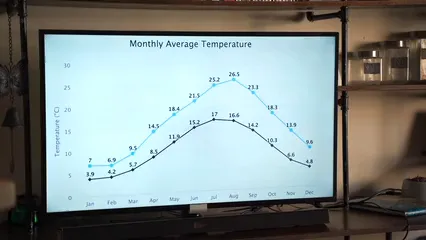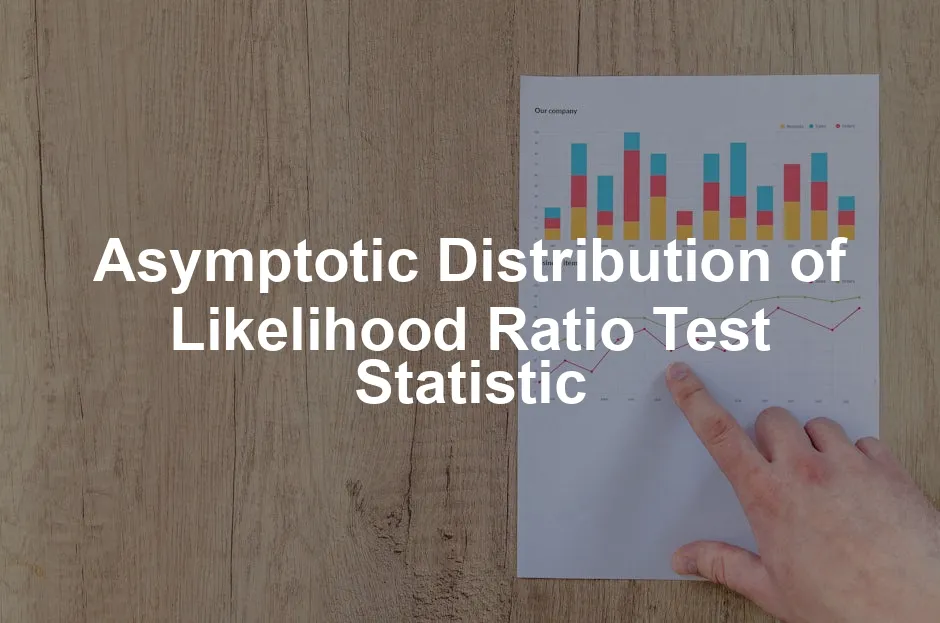Introduction
Likelihood Ratio Tests (LRTs) are essential tools in hypothesis testing. They help statisticians determine if a particular statistical model provides a better fit to the data compared to another model. Imagine you’re trying to decide between two ice cream flavors. Would you choose vanilla if chocolate tastes better? Similarly, LRTs allow us to compare two competing models to see which one “tastes” better.
At its core, an LRT evaluates the ratio of the likelihoods of two models: the null model and the alternative model. If the ratio is significantly different from one, we lean toward the alternative hypothesis. So, why is this important? Well, in fields like genetics and econometrics, making the right choice between models can lead to better predictions and insights. Speaking of insights, why not have a cozy reading nook to ponder over your statistical findings? A reading nook can be the perfect place to dive into your research papers.
Now, let’s talk about something a bit fancy: asymptotic distribution. In statistics, this concept refers to how the distribution of a test statistic behaves as the sample size approaches infinity. Understanding this distribution is crucial because it helps us make inferences about the population based on our sample data.
Enter Wilks’ Theorem. This theorem is a cornerstone for understanding the asymptotic distribution of the likelihood ratio test statistic. It tells us that under certain conditions, the test statistic follows a chi-squared distribution as the sample size increases. This is a game-changer in hypothesis testing. It’s like knowing that once you eat enough ice cream, you’ll start to feel full. With LRTs, once we gather enough data, we can confidently determine if our chosen model is the right one. Want to indulge in some ice cream while you contemplate? Check out this ice cream maker to whip up your favorite flavors!
In this article, we will explore the intricacies of Wilks’ theorem and how it shapes our understanding of likelihood ratio tests. We will also unpack the implications of this theorem for statistical inference and provide examples to illuminate its significance. So, grab a spoon, and let’s dig into the delightful world of LRTs and their asymptotic distribution!

Understanding the implications of Wilks’ theorem is essential for statistical inference. statistical inference for estimation in data science
The Asymptotic Distribution of the Likelihood Ratio Test Statistic
Wilks’ Theorem
Wilks’ theorem is a fundamental result in statistical theory. It provides a crucial insight into the behavior of likelihood ratio tests (LRTs) as sample sizes grow. Simply put, it states that the likelihood ratio statistic converges to a chi-squared distribution under certain conditions. To help you visualize this, imagine a set of statistical tools that you can use to measure and analyze your data effectively!
To break it down, consider the setup: we have two statistical models – one representing the null hypothesis H0 and the other the alternative H1. The likelihood ratio is defined as the ratio of the maximum likelihood of the null model to that of the alternative model. Formally, we can express the likelihood ratio statistic as:
λ = L(θnull) / L(θalt)
Where L denotes the likelihood function and θ represents the maximum likelihood estimates under the respective models.
Wilks’ theorem asserts that, under regularity conditions, the statistic
-2 log(λ) = -2 log(L(θnull) / L(θalt))
is asymptotically distributed as a chi-squared random variable with degrees of freedom equal to the difference in the number of parameters between the two models. In mathematical terms, this can be stated as:
-2 log(λ) ~ χ2dfalt – dfnull
This holds true when the sample size approaches infinity and the null hypothesis is true. Regularity conditions include the continuity and differentiability of the likelihood function, ensuring that the maximum likelihood estimates are well-defined.

Implications of Wilks’ Theorem
Wilks’ theorem carries significant implications for hypothesis testing. Primarily, it assures us that as our sample size increases, the distribution of the likelihood ratio test statistic approaches a chi-squared distribution. This means that we can use chi-squared critical values to determine significance levels for our test. If you’re thinking about diving deeper into statistical concepts, consider grabbing a statistics textbook that covers these theories in detail!
When the null hypothesis H0 holds, the likelihood ratio statistic will tend to be small, leading to larger values of -2 log(λ). Conversely, if the alternative hypothesis H1 is more appropriate, the statistic will tend to be larger.
The beauty of this result is that it allows researchers to construct confidence intervals and hypothesis tests with a solid foundation. It simplifies the complex world of statistical inference. As the sample size grows, we can trust that our test statistic will behave in a predictable manner. Essentially, the larger the sample size, the closer our test statistic will be to this well-known distribution.

The implications of Wilks’ theorem are foundational for hypothesis testing. statistics hypothesis testing cheat sheet
Examples and Derivations
Let’s illustrate Wilks’ theorem with a simple example. Imagine we have a normally distributed dataset with unknown mean μ and variance σ2. We want to test:
H0: μ = μ0 vs. H1: μ ≠ μ0
The likelihood function can be expressed as:
L(μ, σ2) = ∏i=1n (1 / √(2πσ2)) exp(-((xi – μ)2 / (2σ2)))
Calculating the maximum likelihood estimates under both hypotheses, we derive the likelihood ratio statistic. As n increases, the statistic -2 log(λ) will converge to a chi-squared distribution with degrees of freedom equal to the difference in the number of parameters between the null and alternative models.

Consider another scenario where we have multiple parameters. For example, testing multiple means in an ANOVA setting. The same principles apply. The test statistic will still follow a chi-squared distribution, provided the conditions of Wilks’ theorem are satisfied.
Wilks’ theorem thus serves as a powerful tool in the statistician’s toolkit. It not only validates the use of the likelihood ratio test but also provides a clear pathway to understanding the asymptotic behavior of our test statistics. If you’re looking to improve your statistical skills, why not invest in a statistics workbook to practice your skills?
Practical Considerations and Limitations
Sample Size Considerations
Sample size is a crucial player in the game of likelihood ratio tests (LRTs). Picture this: you’re baking a giant cake, and you only have a tiny mixing bowl. The same logic applies to statistics. A small sample may not provide a solid approximation of the asymptotic distribution. As the sample size increases, the likelihood ratio test statistic converges towards a chi-squared distribution. However, for smaller samples, this convergence can be less reliable. If you’re planning on baking, make sure to have the right tools! A baking set can make all the difference!
Small sample sizes often lead to small sample bias. This bias occurs when the test statistic does not accurately reflect the true distribution, skewing results. If you’re testing a hypothesis and your sample size is insufficient, your conclusions might be as questionable as a soggy cake! Thus, ensuring an adequate sample size is vital for the accuracy of your test results.
When dealing with small samples, it’s essential to recognize the limitations. A test that is too reliant on asymptotic behavior might lead to erroneous conclusions. Therefore, statisticians are encouraged to perform simulations or use bootstrapping techniques to better understand the distribution of their test statistics. A little extra effort can save you from a big statistical mess!

Adjusted Test Statistics
Now, let’s talk about adjusted test statistics. Think of them as the superheroes of the statistical world, swooping in to save the day when small sample sizes threaten to wreak havoc. Adjusted test statistics modify the standard likelihood ratio statistic to account for the quirks of smaller datasets. Their purpose? To improve the reliability of the results. If you want to take a break from the numbers, a good chocolate bar can be just the treat you need!
There are several approaches to adjust for small sample sizes. One popular method is the use of the Wald test or the Score test. These modifications can better account for the underlying distribution of the data, providing a more accurate test result.
Another approach involves incorporating finite sample corrections. These corrections adjust the degrees of freedom associated with the test statistic, allowing for a more accurate chi-squared approximation. By doing so, the adjusted test statistic can yield results that are closer to reality, even when sample sizes fall short of ideal.
However, these adjustments come with their own implications. While they mitigate bias, they can also reduce statistical power. It’s a balancing act: you want accuracy without sacrificing the ability to detect true effects. In the end, understanding the trade-offs associated with adjustments is essential for any statistician seeking reliable results.

Mixture Distributions
Lastly, let’s explore the intriguing world of mixture distributions. There are instances where the likelihood ratio test statistic may not follow a single chi-squared distribution. Instead, it can behave like a mixture of chi-squared distributions. This phenomenon typically arises in situations involving multiple parameters or when testing complex hypotheses.
A prime example is found in genetic studies, particularly in evaluating variance components. When looking at the equality of covariance matrices, the likelihood ratio test statistic can become a mixture distribution. Researchers may find themselves in a situation where the test statistic’s behavior is more like a cocktail party, blending various distributions into one chaotic gathering. If you’re interested in the science behind genetics, consider subscribing to a science magazine to stay updated!
Another area where this occurs is in quantitative trait loci (QTL) mapping. In these studies, the likelihood ratio test can yield a mixture of chi-squared distributions due to the complexity of the underlying genetic architecture. This can complicate interpretations and lead to challenges in hypothesis testing.
Understanding mixture distributions is crucial for accurate statistical inference. If you’re unaware of this behavior, you might unintentionally rely on an oversimplified model, leading to misleading conclusions. So, keep an eye out for those mixtures and ensure your analyses are prepared to handle the colorful complexities they bring!

In summary, sample size, adjusted test statistics, and mixture distributions are all vital considerations when employing likelihood ratio tests. By being mindful of these factors, statisticians can navigate the intricacies of hypothesis testing with confidence and clarity.
Numerical Simulations and Case Studies
Overview of Numerical Simulations
Numerical simulations play a pivotal role in validating theoretical results. Think of them as a dress rehearsal for statistical theorems. Just as actors practice their lines before hitting the stage, statisticians use simulations to test hypotheses and refine their models. These simulations help confirm whether the likelihood ratio test (LRT) behaves as expected under various conditions. If you’re looking to enhance your simulation skills, consider using simulation software that can streamline your processes!
Common software tools for conducting simulations include R, Python, and MATLAB. R, in particular, shines in statistical programming and has a plethora of packages designed for simulations. For instance, the simr package allows users to simulate data according to specified models. Similarly, Python’s statsmodels library provides robust statistical functionalities, while MATLAB offers comprehensive support for matrix operations and statistical analysis.

Case Study: Testing for Equality of Covariance Matrices
Let’s consider a case study based on the paper “Asymptotic Distributions for Likelihood Ratio Tests for the Equality of Covariance Matrices.” This research investigates the log-likelihood ratio test statistics for assessing the equality of covariance matrices across multiple groups. If you’re diving into research, a good research notebook might come in handy to keep your thoughts organized!
In this study, researchers analyzed k independent random samples drawn from p-dimensional multivariate normal distributions. The core finding is that, under the null hypothesis of equal covariance matrices, the limiting distribution of the test statistic converges to a chi-squared distribution.
What’s fascinating is that the study extends beyond traditional fixed sample sizes. It reveals that when either the dimensionality p or the number of groups k increases, the asymptotic behavior of the test statistic remains robust. The researchers also proposed adjusted test statistics, which perform well in approximation regardless of sample characteristics.
This case study highlights the practical implications of using LRTs for testing equality in covariance structures, which is critical in fields like finance and genetics. It underscores that when the appropriate conditions are met, the LRT can provide reliable assessments of covariance matrix equality.
Interpretation of Results
The numerical simulations and case studies have profound implications for interpreting results from likelihood ratio tests. First, they illustrate the importance of considering sample size and dimensionality when applying LRTs. As our case study shows, larger dimensions or more groups can still yield valid results, but caution is necessary when operating in small sample contexts. If you’re looking to analyze your results further, consider using data analysis software to enhance your insights!
Furthermore, the adjusted test statistics proposed in the study offer a practical solution when traditional assumptions of LRTs do not hold. Researchers can apply these adjustments to improve the accuracy of their inferences, especially when dealing with complex data structures.

Ultimately, these insights inform practical applications of LRTs in various fields. For instance, in genetics, the ability to test for equality of covariance matrices can guide researchers in understanding population variances and correlations, thereby influencing breeding strategies or genetic studies. In econometrics, these tests can help assess the stability of financial models over time.
In conclusion, numerical simulations and case studies are not just academic exercises; they are essential tools that enhance our understanding of likelihood ratio tests and their applications. By embracing these methods, researchers can ensure more robust and reliable statistical conclusions.
Conclusion
In summary, we’ve journeyed through the fascinating realm of the asymptotic distribution of the likelihood ratio test statistic. Starting with the foundations, we established that likelihood ratio tests (LRTs) are pivotal in hypothesis testing, enabling statisticians to compare models effectively. We emphasized the importance of Wilks’ theorem, which reveals that the likelihood ratio statistic, under certain conditions, converges to a chi-squared distribution as sample sizes increase.
What does this mean for statistical inference? Understanding the asymptotic distribution of the likelihood ratio test statistic is crucial for making informed decisions based on data. It provides the groundwork for constructing confidence intervals and hypothesis tests that are both reliable and interpretable. As researchers, knowing that our test statistics will behave predictably as our sample size grows gives us confidence in our results. If you’re considering a comfort food to enjoy while studying, why not try a popcorn maker?

Looking ahead, there are exciting avenues for future research. One area of interest is the exploration of adjusted test statistics that can provide greater accuracy in small sample settings. As the statistical landscape evolves, adapting methodologies to tackle modern data challenges is essential. Moreover, the implications of mixture distributions in complex models warrant further investigation, especially in fields like genetics and econometrics.
Practically, the applications of LRTs are vast. Analysts and researchers can harness these tests across various domains, from genetics to finance, to draw meaningful conclusions. The ability to determine whether a model fits well or if another is more appropriate is invaluable. As our understanding deepens, the potential for LRTs to inform decisions continues to grow.
In conclusion, mastering the asymptotic distribution of the likelihood ratio test statistic is not just an academic exercise; it is a vital skill for any statistician or data analyst. By embracing this knowledge, we can elevate our statistical practices and contribute to the ever-expanding world of data-driven discoveries.
FAQs
What is the likelihood ratio test?
The likelihood ratio test (LRT) is a statistical method used to compare the goodness of fit of two competing models. It assesses whether the model that includes additional parameters significantly improves the fit compared to a simpler model. By calculating the ratio of their likelihoods, LRTs help determine if one model is significantly better than the other.
Why is Wilks’ theorem important?
Wilks’ theorem is crucial in hypothesis testing because it establishes that the test statistic of the likelihood ratio test converges to a chi-squared distribution under the null hypothesis as sample sizes increase. This allows researchers to use chi-squared critical values to determine significance levels, simplifying the process of making statistical inferences.
What are common issues with small sample sizes?
Small sample sizes can lead to unreliable results in likelihood ratio tests. The assumption that the test statistic approximates a chi-squared distribution may not hold true, resulting in increased chances of Type I or Type II errors. This small sample bias can skew the validity of conclusions drawn from the test.
How can one apply LRTs in practice?
To apply likelihood ratio tests in practice, researchers should ensure their models are correctly specified and the necessary assumptions are met. Utilizing statistical software, like R or Python, can streamline calculations and simulations. It’s advisable to familiarize oneself with the underlying statistical principles and to verify the conditions of Wilks’ theorem for accurate results.
What tools can be used for numerical simulations?
Several software and programming languages are great for conducting numerical simulations related to likelihood ratio tests. R is a popular choice due to its extensive statistical packages, such as simr and stats. Python also offers powerful libraries like statsmodels for statistical analysis. MATLAB is another option for those who prefer matrix operations and statistical modeling in its environment.
Please let us know what you think about our content by leaving a comment down below!
Thank you for reading till here 🙂
All images from Pexels




